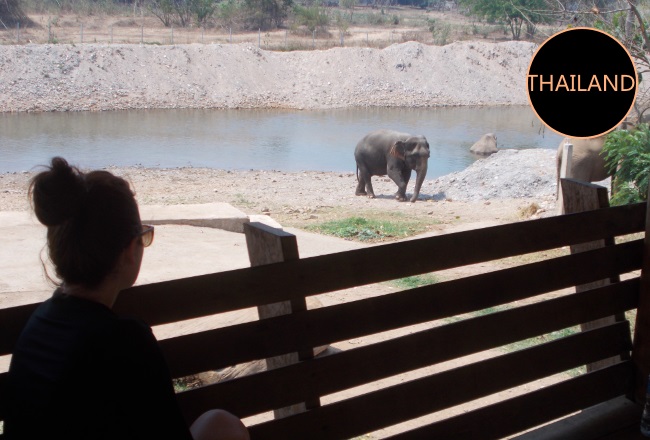Save the Elephants: Elephant Nature Park, Chiang Mai

It’s normal, I think, to put the most difficult and disturbing realities of life on earth to the back of your mind. None of us could function if we constantly acknowledged the truth of just how messed up this planet really is. If it wasn’t for that safe little smokescreen of wilful ignorance that envelops me every time I learn too much about something frightening (I simply refuse to watch An Inconvenient Truth) I’d be a quivering wreck. Well, more quivering and more wrecked than I already am.
But sometimes a certain occurrence, a certain headline just pierces straight through my practised indifference. I can’t ignore it. It’s too sad. Today the fact that a Texan man paid $350,000 for the privilege of killing a critically endangered Black Rhino is at the heart of my despair. There are fewer than 5000 of these Rhinos left and this guy has paid to go over to Africa, hunt one down, kill it and take its body back to the US as a trophy. Unsurprisingly his actions have caused a huge controversy and prompted people everywhere to speculate on the fate of the world’s megafauna, large animals such as Rhinos and Elephants that continue to diminish in numbers.
There’s an article in the Guardian today in which George Monbiot looks at how and why we humans are hell bent on driving these beautiful monsters to extinction. He finished by saying,
The destruction of some of the last populations of the animals that shaped us, as well as the natural world, inflicts, I feel, a great wound in our lives, diminishing the wonderful planet on which we evolved, shrinking imagination, crushing experience. All of us should have an interest in supporting those who seek to save these wonderful creatures.
Source: Attacks on the last elephants and rhinos threaten entire ecosystems | Environment | The Guardian
Which brings me to an altogether more positive story on a similar theme, my visit to the Elephant Nature Park in Chiang Mai, Thailand. Most people who go to Thailand want to have some kind of contact with elephants and while it’s possible to see elephants at circuses, zoos and temples, it’s a far more ethical and overall enjoyable experience to visit a sanctuary. I did my research and found a sanctuary that did not allow tourists to ride the elephants, a bizarre thing to do at a sanctuary which by definition exists to provide the animals with a safe refuge from enslavement and ill-treatment, and booked us up for a day long visit.
It was expensive on a backpacking budget but as soon as we arrived at the expansive reservation and saw the gentle, other-worldly creatures ambling all around I knew it was more than worth it. I had seen elephants before, sad, dazed giants, pacing back and forth in enclosures that made for an existence equivalent to you or I being locked in the stall of a public toilet for the remainder of our days but these elephants looked different.
The vast majority of the elephants here had been rescued from Burma where it is still legal to use elephants in the logging industry or from other parts of Asia where they were used as circus attractions. Many of the elephants had deformities due to ill-treatment – broken legs and hips that had never been allowed to heal, twisted spines made to carry loads that were too heavy – and the majority of them were blind. At first I thought this blindness was due to old-age, most of the elephants at the sanctuary are nearing the end of their lives, but it’s so much more upsetting than that. The elephants are blind because they’ve had their photographs taken too many times. Elephant’s eyes are particularly sensitive to light and repeated exposure to a camera’s flash is enough to make them permanently blind.
Despite the visible evidence of the cruelties the elephants had suffered the atmosphere at the sanctuary was overwhelmingly calm. The best part of the day was the free time between feeding the elephants, touring the grounds and taking the elephants into the river for a bath. Free time to just sit and watch these incredibly dignified and intelligent beings as they quietly went about living their lives. In the wild elephants live in family groups, they socialise, raise children and mourn their dead, just like us. They contribute to the eco-system in complex ways we can’t fully understand and pose no threat to any human being. It’s strange then, isn’t it, that we’re so intent on destroying them.





